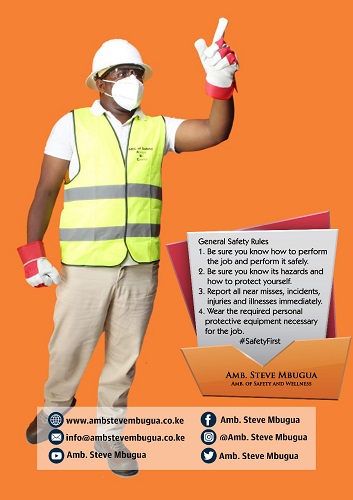Ergonomics is the science of designing work environments and tasks to fit the capabilities and limitations of the human body. Effective ergonomics helps prevent musculoskeletal disorders (MSDs) and improves overall comfort, efficiency, and safety in the workplace. Musculoskeletal health refers to the well-being of the muscles, bones, joints, tendons, and ligaments that support movement and stability. Proper ergonomics is crucial in maintaining musculoskeletal health and preventing injuries.
Here’s a detailed exploration of ergonomics, its impact on musculoskeletal health, and best practices for creating an ergonomically sound workplace:
1. Understanding Ergonomics
1.1 Definition and Importance
• Definition: Ergonomics is the study of how people interact with their work environment and the design of work systems to optimize human performance and well-being.
• Importance: Proper ergonomic practices reduce the risk of injuries, increase productivity, and improve overall job satisfaction by making tasks more comfortable and efficient.
1.2 Key Ergonomic Principles
• Fit the Task to the Person: Design tasks and workstations that accommodate individual differences in size, strength, and flexibility.
• Reduce Strain and Stress: Minimize physical strain and stress by designing workspaces that support natural body movements and postures.
• Promote Comfort and Efficiency: Ensure that tools, equipment, and work processes are designed to enhance comfort and efficiency.
2. Musculoskeletal Disorders (MSDs)
2.1 Common MSDs
• Back Pain: Often caused by improper lifting techniques, poor posture, or prolonged sitting.
• Carpal Tunnel Syndrome: A condition caused by repetitive motions or poor wrist positioning, leading to nerve compression in the wrist.
• Tendonitis: Inflammation of tendons caused by repetitive movements or overuse.
• Shoulder Strain: Resulting from awkward postures or heavy lifting.
2.2 Risk Factors for MSDs
• Repetitive Movements: Frequent or continuous repetitive tasks can strain muscles and tendons.
• Awkward Postures: Maintaining non-neutral postures for extended periods can lead to discomfort and injury.
• Heavy Lifting: Lifting heavy objects incorrectly or without proper support can cause back and shoulder injuries.
• Forceful Exertions: Applying excessive force during tasks can strain muscles and joints.
3. Ergonomic Solutions and Best Practices
3.1 Ergonomic Workstation Design
• Chair Selection: Use adjustable chairs with proper lumbar support, adjustable height, and seat depth to support a neutral sitting posture.
• Desk Height: Ensure the desk height allows for comfortable positioning of the arms and wrists, with elbows at a 90-degree angle.
• Monitor Placement: Position monitors at eye level, about an arm’s length away, to reduce neck strain and eye fatigue.
3.2 Proper Lifting Techniques
• Use Legs, Not Back: Bend at the knees and lift with the legs rather than the back. Keep the load close to the body.
• Avoid Twisting: Turn your whole body instead of twisting at the waist when lifting or carrying objects.
• Ask for Help: For heavy or awkward items, use lifting aids or ask for assistance.
3.3 Task Design and Rotation
• Job Rotation: Rotate tasks among employees to prevent repetitive strain and allow different muscle groups to rest.
• Breaks and Stretching: Incorporate regular breaks and stretching exercises into the workday to relieve muscle tension and reduce fatigue.
3.4 Tool and Equipment Design
• Ergonomic Tools: Use tools designed to reduce strain, such as ergonomic keyboards, mouse devices, and hand tools.
• Adjustable Equipment: Invest in adjustable workstations, monitor stands, and other equipment to accommodate various user needs.
3.5 Training and Awareness
• Employee Training: Provide training on proper ergonomic practices, including workstation setup, lifting techniques, and stretching exercises.
• Awareness Programs: Promote awareness of the signs and symptoms of MSDs and encourage employees to report discomfort early.
4. Implementing an Ergonomic Program
4.1 Conduct Ergonomic Assessments
• Workplace Evaluation: Perform ergonomic assessments of workstations and tasks to identify potential risks and areas for improvement.
• Employee Feedback: Gather feedback from employees about their work environment and any ergonomic concerns they may have.
4.2 Develop and Implement Solutions
• Action Plan: Create an action plan to address identified ergonomic risks and implement appropriate solutions.
• Ergonomic Guidelines: Develop guidelines and procedures for ergonomic practices and ensure they are communicated to all employees.
4.3 Monitor and Review
• Regular Check-Ins: Conduct periodic reviews of ergonomic practices and workstation setups to ensure ongoing effectiveness.
• Continuous Improvement: Use feedback and incident reports to make adjustments and improvements to the ergonomic program.
5. Benefits of Ergonomics for Musculoskeletal Health
5.1 Reduced Injury Rates
• Prevention: Proper ergonomics helps prevent musculoskeletal injuries by reducing strain and promoting safe practices.
• Less Downtime: Fewer injuries lead to less downtime and fewer worker’s compensation claims.
5.2 Increased Productivity
• Comfort and Efficiency: Ergonomically designed work environments increase comfort and efficiency, leading to higher productivity levels.
• Reduced Fatigue: Proper ergonomics reduce physical fatigue, allowing employees to maintain focus and performance throughout their shift.
5.3 Improved Employee Well-being
• Health and Satisfaction: Employees who work in ergonomically sound environments are more likely to experience improved physical health and job satisfaction.
• Reduced Stress: A comfortable and well-designed workspace helps reduce stress and enhances overall well-being.
Ergonomics plays a crucial role in maintaining musculoskeletal health by designing work environments and tasks that fit the capabilities and limitations of the human body. By implementing ergonomic solutions and best practices, organizations can prevent musculoskeletal disorders, improve employee comfort and productivity, and enhance overall workplace well-being.
Creating an ergonomically sound workplace is not only beneficial for employees but also contributes to the overall success of the organization by reducing injury-related costs and increasing efficiency. Investing in ergonomics is a proactive approach to ensuring a safer, healthier, and more productive work environment.
READ MORE
Safety Culture Video
Safety Proffessionals
Largest Safety Company
Occupational Health and Safety Management System (OHSMS)


















